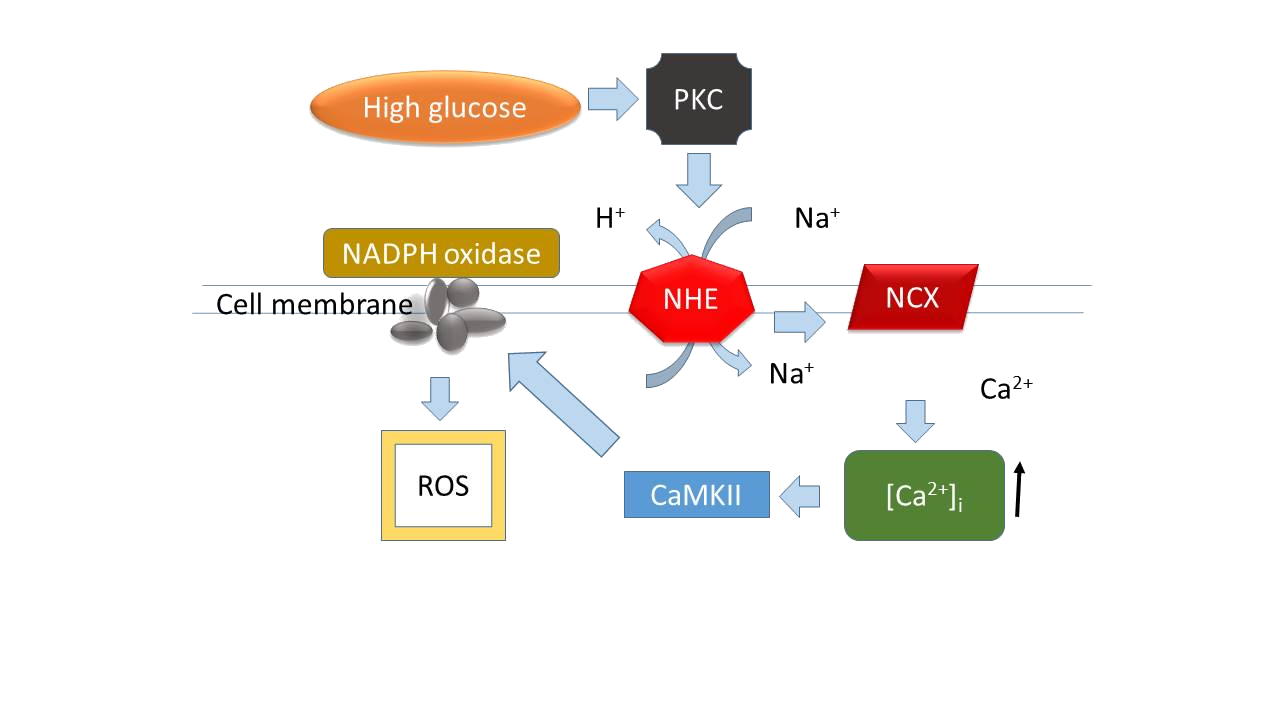NADPH oxidase in diabetic heart
It is well known that reactive oxygen species (ROS) are the main facilitators of cardiovascular complications in diabetes mellitus (Fig.8). Emerging evidence shows that mitochondria and NADPH oxidase are dominant mechanisms of ROS production in the diabetic heart. Hyperpolarization of the mitochondrial inner membrane and impaired mitochondrial function promote ROS production in the mitochondria of the diabetic heart. Uncoupling proteins are upregulated and may reduce the ROS level by depolarizing the mitochondrial inner membrane. NADPH oxidase is another major site of ROS production and its contribution to DM-induced ROS increase has been elucidated not only in vascular smooth muscle cells and endothelial cells, but also in cardiomyocytes. Protein kinase C, angiotensin II, and advanced glycation endproducts (AGEs)/receptor for AGEs can activate NADPH oxidase. Increased intracellular calcium level mediated via the Na(+)-H(+) exchanger and subsequent activation of Ca(2+)/calmodulin-dependent protein kinase II may also activate NADPH oxidase

Figure 8: Role of NADHP oxidase as a source of ROS in diabetic heart